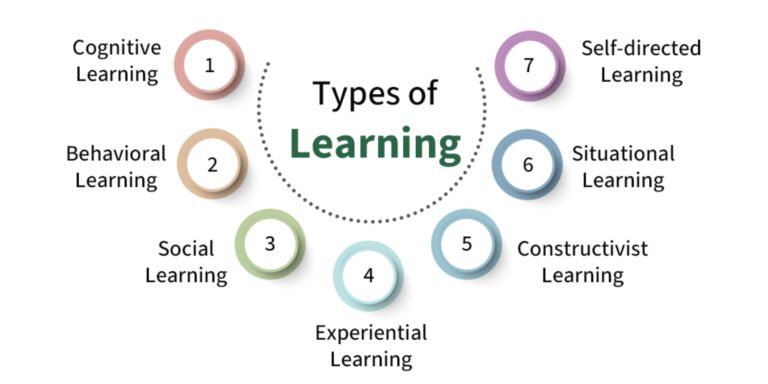Learn English Step by Step : A Comprehensive Guide for Beginners and Beyond

You started with the knowledge that any person who has little or no idea of the language finds it very strange, but with the right mix of a negative-N-positive attitude, everything proceeds in fun and excitement. The way a person approaches the English-learning process depends on why he or she is interested in learning the language: If it is just for travel, career advancement, or pure fun and personal enrichment, it is advisable to break the entire learning process into very small and achievable steps so the person will not get overwhelmed. Without throwing everything into one basket, it is a good way to start with the very basics and build onto it. The best way to go on is to Learn English Step by Step.
In this guide, you will find detailed instruction on how each step in the learning process will work, from building a solid vocabulary to proper grammar rules, from practicing pronunciation to eventual listening and speaking. Do not try to cram any complicated rules or high-order techniques down your throat just yet. We will help you take the steps at a slow and consistent pace. That way your growth will happen naturally with time.
So, if ever you have considered, “In what order does one learn English?” This guide is for you. By following the techniques stated here, you”ll be on the road toward fluency-all the way to full confidence and language skills to help you get by in any situation. Come on! Let’s get this beautiful journey started!
1. Why Learning English is Important
Table of Contents
ToggleLearn English Step by Step which opens many doors for the growth of your personal, professional and academic life. In the world’s lingua franca, English will connect people across cultures therefore making communication possible in different international settings. Whether you are going traveling, hunting for a job, or even seeking to extend your knowledge, a tool is there: English is one of them. Most universities around the globe, books, research papers, and job markets require proficiency in English. This improves cognitive abilities, builds up confidence in individuals, and creates socialization at better levels. The more connected world of today has made mastering the English language no longer merely helpful but imperative to succeeding in almost every field of life
2. The Power of English in Today’s World
English is not just a language nowadays but also the power that unites people all over the world. It is the most prominent business language as well as technology, science and international diplomacy. Learn English Step by Step Because it is important for worldwide communication and collaboration. The language of the internet, English allows people to access the biggest volumes of information, education, and entertainment. Proficiency in English can open doors to career opportunities, cultural exchanges, and social interactions with people from diverse backgrounds. In a highly globalized society, the ability to master English offers an individual the ability to interact with the world and succeed in any field of life.
3. A Step-by-Step Approach to Mastering English
Step 1: Set Clear Goals and Understand Your Purpose
Step 2: Start with the Basics – Vocabulary and Grammar
Step 3: Focus on Listening and Speaking SkillsStep 4: Practice Reading and Writing in English
Step 5: Practice Consistently and Make Learning a Habit
Step 6: Join Communities and Engage with Native Speakers
Step 7: Challenge Yourself and Keep Improving
Step 1: Set Clear Goals and Understand Your Purpose to Learn English Step by Step
● Why Defining Your Goals is Essential

Learn English Step by Step, It defines and clarifies the goals that are set for one’s language learning path because, without clear objectives, it is easy to become disoriented. When clear objectives are set-such as mastering basic conversation skills in three months or writing a professional email in six-it provides a roadmap to progress. Goals keep you motivated and also help you track improvement and celebrate milestones. They also help you prioritize what to learn-vocabulary, grammar, or speaking practice. Altogether, clear-cut goals transform a dreamy aspiration of learning a language into something structured and attainable.
● Types of Goals for Learning English

○ Academic and Professional Goals
Academic and career-oriented goals are essential in learning English either in an educational or career-specific context. These aims typically include: mastering the usage of writing skills of essays, reports, and other forms of presenting ideas; mastering reading comprehension; and understanding both academic texts as well as those for research-based papers. Within a professional context, other goals may comprise learning business English; improving email writing or preparing for the interview in a job. To achieve these goals, one must have a good understanding of formal language, grammar, and vocabulary. Therefore, Learn English Step by Step as it is extremely important for those who are entering college or working in international businesses where English is mainly used for communication.
○ Travel and Social Goals
Travel and social goals are mostly informal and conversational. They focus on mastering the ability to communicate comfortably in travel situations: navigating airports, restaurants, hotels, and local attractions. They will learn useful phrases, directions, greetings, and expressions for daily interactions. Social goals may involve making friends, participating in group conversations, or engaging in cultural exchanges with native English speakers. For these objectives, listening comprehension should be followed by speaking skills and colloquial expression understanding, since those skills will give you feelings of confidence and competency in many sociable and travel-related situations.
● Creating Achievable Milestones

○ Short-Term Milestones
Short-term milestones provide immediate targets that help the learners stay on track and measure their progress in the short run. The milestones are mostly achievable during the short-term period, which involves a matter of weeks or couple of months. A number of examples exist where in one month, the learner would master and learn 100 new words in the vocabulary, or introduce oneself, and have a basic conversation about him/herself in English within a few weeks. Small successes form a good confidence and reinforcement in a learner’s commitment. The short-term successes, of course, will provide that feeling of achievement that keeps them motivated to go further for their more long-term goals.
○ Long-Term Milestones
Long-term milestones are the final global goals helping learners master all aspects of the English language. Typically long-term milestones can be obtained after months or even years and are the last measures of success for any student. Examples can be speaking fluently with native speakers writing a research paper in English without any help or passing a language proficiency exam like IELTS or TOEFL. It usually involves sustained effort and dedication to achieve long-term goals. Learners set and work toward such milestones that can always be measured in order to continue pushing themselves within the language learning process.
● Tracking Your Progress

○ Self-Assessment and Tests
You find self-assessment and tests critical tools for understanding your level of proficiency and indicating areas that have to be enhanced. Through assessment, you have a better indication of where you stand in this learning process. Self-assessment is the reflective process of re-evaluating your strengths, weaknesses, reviewing all the goals that you have put across for yourself, and seeing how effective it has been with your progress. You can use online quizzes language apps or formal proficiency tests like TOEFL, IELTS or Cambridge exams. These assessments provide valuable insight into areas such as vocabulary, grammar, writing and speaking allowing you to tailor your study methods accordingly.
○ Tracking Improvements Over Time
Tracking improvements over time is essential for measuring success and identifying patterns in your language learning. By regularly recording your achievements and comparing them with previous assessments, you can visually observe how much progress you’ve made. For instance, you might look back at a writing sample from a few months ago and notice improvements in vocabulary, grammar, or overall coherence. Regular self-reflection, paired with tracking tools such as progress charts or language apps, will help you stay motivated and focused. These records of improvement serve as reminders of how far you’ve come, reinforcing the idea that consistency leads to mastery.
Step 2: Start with the Basics – Vocabulary and Grammar
● Building a Strong Vocabulary Foundation

○ Key Words and Phrases for Beginners
One needs to focus on key words and phrases that one will use every day when talking. Begin with greetings and introductions, like “Hello,” “How are you?,” and “My name is.” These words will help in easy interaction with other people. One learns necessary vocabulary for day-to-day activities, such as ordering food, asking for directions, and saying basic emotions. This basic knowledge of key phrases would allow you to move through easy conversations and find your confidence with understanding and conveying ideas in the English language to deal with lots of real life situations
○ Categorizing Vocabulary by Themes
An effective way in which one can categorize vocabulary is to do so by theme. The words can be categorized together according to the themes. Learn English Step by Step If a student categorizes his vocabulary into food, travel, health, and work, it makes learning even more structured and logical. This way, words are remembered much better since they are connected to specific contexts. For example, learning a set of words connected with travel (for instance, “airport,” “ticket,” “flight”) will make you recognize all those words together when you hear somebody talk about travel. Categorizing vocabulary into themes also lets you build related knowledge faster since you will always know which words to use in specific situations.
● Mastering Grammar Basics by Themes

○ Sentence Structure and Word Order
Sentence structure and word order are the fundamentals of learning the English language. Basic structures in English, generally, use Subject-Verb-Object order: “I (subject) eat (verb) apples (object).” That is the basis for clear, well-articulated sentences. Of course, more complex than that would be to know how to create questions, negative statements, and complicated sentences. As it happens in the case of auxiliary verbs or modal verbs used before the main verb changes the structure of sentences in questions and negatives. Therefore, being in mastery over sentence structure allows effective communication free from confusion both while speaking or writing in English.
○ Understanding Tenses and Verb Forms
The tenses and the verb forms help in the proper communication of time-related actions in English. The English language uses many tenses to show whether an action has been done in the past, is being done in the present, or will be done in the future. The four forms of the three main tenses are simple, continuous, perfect, and perfect continuous. For example, “I eat” is present simple, and “I am eating” is present continuous; both are showing two different aspects of time. With learning how and when to use these tenses, you can present actions with a much more defined precision whether describing something that’s happening now, happened in the past, or will occur in the future
○ Articles, Prepositions, and Pronouns
Articles, prepositions, and pronouns are some of the most common elements in English grammar that add meaning and clarity about relationships in words. Articles include a, an, the, and state that nouns are either definite or indefinite. Prepositions represent the relationship of the noun with other words within the sentence; they denote direction, location, or time, and include words such as in, on, at, by. Pronouns replace nouns so that they are not repeated. It is the mastering of these pronouns that allows one to make grammatically correct and coherent sentences. Knowing their proper usage will make your language more precise and your communication clearer, for they help join ideas and avert ambiguity.
● Learn English Step by Step by Using Flashcards for Vocabulary Practice

○ Digital Flashcards and Apps
Digital flashcards and apps are extremely popular because they are easy, interactive, and convenient to use. An app like Anki, Quizlet, or Memrise will give you a tool to make your digital flashcards and access them through your smartphone or computer, thus allowing you to be mobile while studying. These apps often have a spaced repetition algorithm that reminds you to review words based on the likelihood that you will forget them, making it possible for you to memorize words for a long time. But that is not all-most digital flashcards contain audio and images, along with other types of multimedia-to make learning really much more enjoyable and effective by offering an interactive practice and reinforcement of the language.
○ Spaced Repetition and Consistencyand Apps
Spaced repetition is a great technique to learn new information through revising at wider and wider time intervals. That’s effective since it helps solidify what’s in your head right before you forget it. This is a significant aspect that language-learning apps implement by helping you learn vocabulary, grammar, and even other aspects of the language efficiently. Consistency is as vital; it will help you learn every day so that you will not forget things you learned earlier. Committing to short, consistent sessions rather than infrequent lengthy study periods actually leads to better retention and gradual mastery of the language, thus to steady progress towards fluency.
Step 3: Focus on Listening and Speaking Skills
● Developing Listening Skills

○ The Importance of Listening Practice
Listening practice is vital for the development of comprehension and listening in general as well as exposure to natural language use. Familiarization of English because of regular exposure to the sound, intonation, and diction of native speakers frequently leads to picking up idiomatic expressions, slang, and cultural references found in few or no textbooks. Listening also improves your ability to understand spoken English in real-life situations from daily talks to academic debates. Without consistent practice, it becomes quite hard to process language quickly, and that is very critical in fluent communication. The engagement of the listening materials enhances your skills as well as fastens your total progress in learning.
○ Types of Audio Content to Listen To
There are many forms of audio you can listen to to suit a specific area of your language skills. Start by using beginner materials such as podcasts or audiobooks. Many are slow in speed and clearly articulated so that you are able to absorb basic words and sentence formations. As your proficiency increases, begin to include content such as news podcasts, radio shows, or public speaking engagements, as this will bring more complex use into your repertoire. Secondly, you will increase your ability to track varied subjects if you listen to interviews, debates, and TED talks. Different audio sources also expose you to different kinds of accents, vocabularies, and cultural nuances.
- Podcasts, Audiobooks, and Music
- Movies, TV Shows, and YouTube Videos
● Practicing Speaking Aloud

○ Self-Talk and Reading Out Loud
Self-talk and reading out loud are good ways of practicing speaking in case you have no speaking partner. Self-talk means talking to yourself in English, describing your day, thoughts, or plans. The fluency grows by repetition in vocabulary and sentences. Reading from books, articles, or even work written by you can improve pronunciation and further aid comprehension. Reading aloud enhances your ability to produce the same sounds as the English language and trains the brain to recognize rhythm of the language. Self-talk and reading aloud, overtime, generate confidence in you.
○ Recording Yourself for Feedback
Self-recording is an excellent tool to enhance your pronunciation, fluency, and even self-awareness. When you listen back to your recordings, you can pinpoint things that need work, such as pronunciation, errors in grammar or phrasing. Using this technique helps you keep track of how you are progressing and recognizes patterns in your speech. You can listen to native speakers versus your own recordings, or you can use different language apps which will give you feedback on your pronunciation. By recording yourself regularly you develop a better understanding of how you sound in English and can work on making adjustments to improve your speaking skills.
● Finding Speaking Partners

○ Language Exchange Programs
The best way to master speaking English by practicing with native speakers while teaching them your mother tongue is to use language exchange programs. They allow you to find and connect with others using an online platform, such as Tandem, HelloTalk, or your local language cafes, and language exchange is mutually beneficial because both parties get to practice their target language. This also offers a chance to talk with different cultures and people, which can improve your vocabulary and expose you to distinct accents and speaking mannerisms. In taking part in language exchange, you get experience in speaking practice along with cultural intelligence while assisting others.
○ English Conversation Groups
A great practical way to improve speaking in a supportive, social environment is by joining English conversation groups. These usually comprise language learners who meet frequently to converse in English, in person or online. Conversation groups will allow you to practice topics, listen to others, and gain new perspectives on how the language can be used. These also support safe areas for making mistakes without judgment, allowing one to gain confidence in speaking. Whether it is informal conversation or formal discussion, these groups afford time to hone conversational skills and listening to different accents and speech patterns.
Step 4: Practice Reading and Writing in English
● Starting with Simple Texts

○ Graded Readers for Beginners
These books, called graded readers, are specifically designed to be at a specific level of difficulty, especially for language learners. They utilize simplified grammar and short sentences along with controlled vocabulary so that the learner could easily read them and understand them. Graded readers provide systematic approaches to building up vocabulary as well as enhancing reading comprehension. Variations of genres and themes include adventure, mystery, or everyday life -so learners can choose topics that interest them-the more they read graded readers, the better for their fluency while introducing new words and grammatical structures to them in an accessible and enjoyable way.
○ Children’s Books and Short Articles
Children’s books and short articles are recommended to be used for the beginning learners as they practice reading in English. Children’s books commonly work on simple sentence formations, repetition, and illustrations that are attractive in nature and bring learning experience more to life and fun. Commonly, books for children focus on basic vocabularies, familiar themes, and everyday situations. Building of reading comprehension can be seen through short articles printed in beginner-level newspapers or websites. They often contain fewer paragraphs and use simple words, rendering them ideal for learning new words and expressions. Together, they give tremendous practice and a feeling of accomplishment when reading.
● Expanding Your Reading Material

○ News Websites and Magazines
Reading news websites and magazines is one of the most effective ways of practicing English while following current events. News articles mostly cover a large variety of subjects, including politics, science, culture and technology where formal and semi-formal language might be used. Magazines will depend on genre, but the vocabulary can sometimes be more specific, such as health, travel, or entertainment. These sources test your reading ability, as the text is filled with complex sentence structures and professional terminologies. Many news websites carry articles at a range of difficulty levels, so you can steadily advance the reading difficulty as your skill builds, strengthening your language skills while expanding your knowledge base.
○ Social Media and Blogs
Social media as well as blogs are very great sources for improving reading comprehension, improving understanding of conversational English. Most posts from social media have informal and conversational content that would teach standard daily vocabulary, slang and idiomatic expressions. Blogs will come across topics of specific interests but will otherwise normally have more precise content with content that’s relaxed yet informative in writing. By reading social media posts, comments and blogs regularly, you’ll expose yourself to natural language use varying writing styles and current trends which will help improve both your reading skills and your understanding of modern English communication.
● Improving Writing Skills

○ Journaling and Diary Writing
It is effective to improve writing skills while journaling or diary writing, reflecting on your daily life. Writing in a journal allows you to make sentences and give expression to your thoughts in English in a relaxed, informal manner. Begin by writing a few sentences a day describing your experiences, emotions, or goals. Progressively try to pen down longer entries, which expand vocabulary and improve sentence variation. This frequent use improves your fluency in writing and makes you feel relatively at ease when using the language. In a private, pressure-free environment, you can play with new vocabulary and grammar structures through journaling.
○ Joining Online Forums and Writing Communities
Joining online forums and writing communities is a valuable opportunity to practice your writing in a collaborative and supportive environment. There, you would be able to discuss, share, and get comments from others about your work. If it’s a language-learning forum, specialized writing group, or social media, writing regularly in these places helps you in the expression of ideas clearly and effectively. You can interact with people from diverse backgrounds and learn how they write, which broadens your understanding of different writing styles. Feedback from fellow learners or experienced writers helps refine your skills and build confidence.
● Using Writing Apps for Immediate Feedback

○ Grammarly, Hemingway, and Other Tools
Using writing apps for immediate feedback is one of the efficient ways to improve your writing skills. These apps analyze your writing in real time and correct grammar, vocabulary, punctuation, and style. Tools like Grammarly or Hemingway provide suggestions for clarity, tone, and sentence structure. These are very useful for beginners and intermediate learners who help identify common errors and provide solutions. These apps would help you to track your progress, avoid repetition of mistakes, and hone your writing style. Getting instant feedback will encourage you to learn from your mistakes and improve your writing ability gradually over time.
Step 5: Practice Consistently and Make Learning a Habit
● Creating a Study Schedule

○ Time Management Tips for Language Learning
Effective time management is important for successful language learning. Plan dedicated time each day for conducting language practice so that it may be included within your daily routine. Prioritize the activities according to your goals such as doing a lot of speaking and listening for conversational fluency or more reading for vocabulary expansion. Be as focused and avoid mental fatigue by utilizing the Pomodoro technique of study-25 minutes-study-25 minutes-with 5-minute break in between, or apply the Pomodoro method and monitor your own study regularly, track whether you have reached some sort of milestones and make your necessary adjustments accordingly to continue momentum.
○ Setting Specific Daily Goals
Specific day goals will help achieve a steady way of learning one’s foreign language. Instead of having vague aims such as “study English, one should break down the concrete tasks into bits like “learn 10 vocabulary words” or “do this grammar exercise with regards to past tense.” These manageable, measurable tasks make one work towards them instead of getting vaguer. Break your bigger goals into smaller, tangible ones, such as reading a short article in English or having a conversation. This will keep you well-organized and motivated to monitor improvements in time to remain at a steady pace toward fluency.
● Mixing Different Learning Methods

○ Balancing Reading, Writing, Listening, and Speaking
The best way to become proficient in a language is Learn English Step by Step to balance reading, writing, listening, and speaking. All of these skills support and strengthen each other and focusing on one will only limit your progress. Reading builds vocabulary writing reinforces grammar and sentence structure, listening improves comprehension and pronunciation and speaking boosts fluency. Devote time to each skill in your study routine adjusting the focus based on your goals. For example if you target speaking, practice the moment you engage in a conversation or even when recording yourself. Balanced practice is sure to help achieve well-rounded development and have a more natural command of the language.
● Staying Motivated with Rewards

○ Reward Systems for Reaching Milestones
Reward systems to reach milestones help them feel how much they have actually achieved and stay motivated on the language learning journey. Set specific goals, such as learning a certain number of vocabulary words or completing a certain number of lessons. Be sure to reward yourself once you hit these milestones; it could be that small treat, a day off from studying, or even something you’ve desired for a while. This approach helps create positive reinforcement, making it easier to sustain the momentum. Milestones celebrations frequently give one a sense of accomplishment and reveal how far he has come in life, raising his morale and motivation for more learning.
○ Overcoming Plateaus in Your Learning Journey
Plateaus are normal in the language learning process when despite effort progress seems to be paralyzed. It requires adapting your learning strategies to overcome a plateau. Change your study routine to introduce variety and involve yourself with more challenging material. Make some new goals specific and focus and start again. It may also be helpful to revisit previous concepts or skills to ensure they are fully mastered. Sometimes it could be the practice with native speakers or some more intense exercises that break the monotony and sends you over the plateau. Treat plateaus as part of your learning process; be patient in your progress.
Step 6: Join Communities and Engage with Native Speakers
● Finding Online Communities

○ Forums and Chat Groups for English Learners
Some online forums and groups for learners of the English language are perfect platforms to pose your questions, develop your writing, or keep up conversations. Such forums present a place of support in discussing language-related challenges, resource-sharing, and support among peers.You can engage in a network like Reddit, language exchange or dedicated Facebook groups where people from other continents can engage you. Through engaging these talks, you improve your vocabulary, learn the new phrases in addition to getting helpful feedback from others. Regular engagements with fellow learners or native speakers enhance your language skills and increase confidence.
○ Social Media and Online Courses
Social media and online courses present dynamic opportunities for language learning and interaction with the global community. You can follow language influencers, join discussion groups, or watch educational videos that provide tips and practice exercises on social media. Many social media accounts are dedicated to grammar tips, vocabulary building, and language games. Online courses provide learned structure by experts. They offer variety at several levels through websites such as Coursera, Duolingo, or edX-so you will always find something relevant to the course and even allow you to be in control while learning.
● Attending Language Meetups

○ Language Exchange Events in Your Area
Language exchange events in your region are a great way to practice English, as they immerse you in the language through interactive conversations with native speakers. These events create a relaxed atmosphere for conversation practice, bringing together native speakers of English and learners.In return you help others practice your native language. You will be able to develop speaking skills to apply in practice receive feedback on pronunciation and learn a part of that language that textbooks may not teach. It also provides you with the opportunity to network and make friends with people from different cultural backgrounds. Many cities hold regular language exchange meetups or events that can be sought out through local community centers or language platforms.
○ Virtual Meetup Platforms for Speaking Practice
Virtual meetup platforms are ideal for practicing speaking skills with people from other places if you do not have access to the local language exchange groups. Such platforms like Zoom, Skype, and specific language learning applications host virtual meetups where students can practice the language on a given day with native speakers or fellow students. These platforms allow you to connect in real-time, improve your conversational skills, and receive immediate feedback. With the ability to join from everywhere, virtual meetups offer one the opportunity for regular speaking practices, conquering nervousness, improving vocabulary, all while acquiring more cultural insight based on different people speaking.
● Taking Online English Classes

○ Benefits of One-on-One Tutoring
Learn English Step by Step by One-on-one tutoring which offers a very individualized learning experience that could quite quickly significantly speed up the assimilation of language. Private tutors can customize lessons in response to specific needs and let you rehearse where you need to improve most. Private tutors focus on grammar, pronunciation, or conversational skills and provide immediate feedback and adjust the lesson structure based on your learning style. This focused attention helps to work on individual problems, build up confidence and ensure faster progression. Moreover the tutor may introduce relevant material such as news articles or books, to make learning interesting and applicable to your own interests and objectives.
○ Top Platforms for Personalized Learning
Top personal learning platforms provide learners with tailored courses and tutoring services to support their achievement of linguistic objectives. Websites such as iTalki, Preply, and VIPKid link students with native English tutors for individual lessons. They provide the opportunity for the learner to select a tutor given his needs in relation to conversation practice, exam preparation, or grammar improvement. Many of the platforms offer flexible pricing and scheduling so the learner can do it at their own pace. Personalized feedback and lessons will allow you to focus on weaknesses while maximizing your strengths thereby making the learning process more efficient and enjoyable.
Step 7: Challenge Yourself and Keep Improving
● Taking Proficiency Tests to Measure Progress

○ TOEFL, IELTS, and Other Language Assessments
Commonly known tests measuring proficiency in English for academic or professional purposes include TOEFL, IELTS, and many more. TOEFL emphasizes the academic type of English that evaluates your listening, reading, and writing ability while being in university surroundings. IELTS is an assessment of the skills that people will use both to study and immigrate in any country; thus, the listening, reading, writing, and speaking abilities of a candidate are tested. These tests provide objective assessment of your skills and preparing for them gives you a clear goal to work toward. These tests are used by many students in evaluating the progress made by them, identifying weak areas, and boosting their motivation to continue improving.
○ Using Test Results as Motivation
Motivation through test results keeps you going on track and marks your progress. Preparing for TOEFL or IELTS exams transforms the test into a tangible objective that keeps motivating you to read through everything regularly. It is after your test results where you analyze all the areas that you did really well at, and those in which you can improve. Reflection shows you the length that you have been able to reach and the focus points that demand more attention. Additionally, high test scores can provide a sense of achievement and boost your confidence. Use your test results as proof of your hard work and motivation to set higher learning goals.
● Thinking in English

○ Techniques to Transition from Translation to Thinking
Learn English Step by Step, to transition from translating to thinking in English, begin by keeping yourself immersed in the language as much as possible. Talk and listen constantly to a language partner or, for example, watch movies with no subtitles at all. Imagine your daily thoughts or activities in mental English.Do not pause to translate words in your head but rather think about the meaning of phrases and the context of what you’re trying to say. Consistent practice will help your brain start processing English directly, making you communicate more naturally and fluently.
● Learning Advanced Vocabulary and Idioms

○ Expanding Your Vocabulary with Idiomatic Expressions
Learn English Step by Step from Expanding your vocabulary with idiomatic expressions is an essential part of mastering English. Idioms often cannot be translated literally, so understanding their meanings and how they’re used in context can help you sound more like a native speaker. Begin by learning common idioms and phrases used in everyday conversations, such as “break the ice” or “under the weather.” Listening to native speakers in movies, podcasts, and conversations exposes you to idioms in real-life contexts. Make it a goal to learn a few idioms each week and incorporate them into your speaking and writing to increase fluency.
○ Phrasal Verbs and Slang
Phrasal verbs and slang are important components of spoken and informal English, often used by native speakers in casual conversations. Phrasal verbs are combinations of verbs and prepositions or adverbs that take on new meanings, such as “give up” or “turn down.” Slang refers to informal words and expressions, often unique to specific regions or groups. To master these, it’s important to listen to native speakers and practice using them in conversation. Learn English Step by Step also Pay attention to their meanings and nuances, as phrasal verbs and slang can be tricky but help you communicate more naturally and fluently in everyday situations.
Conclusion
It really is such a dynamic process and yet it’s full of reward effort, dedication, and willingness to face the challenge. Every step-from mastering vocabulary and grammar to being able to speak with native speakers-will strengthen your foundation in the language. Whether your purposes are academic, professional, or personal, your ability to communicate effectively in English will open countless doors. A little like learning any other skill, it is not going to click overnight; however, a patient ear, more frequent practice, and improvement on the step will make fluency perfectly attainable. Remember that learning a language really is not about memorizing rules. It’s connecting people who share ideas, understand perspectives, and basically feel comfortable communicating. Every journey is comprised of little victories mastering steps. Continue to keep patient, keep practicing, celebrate good times when they come, and Learn English Step by Step to one day mastering English
